Soaring in popularity over recent decades despite being widely misunderstood, punchy orange wine pairs handily well with full-flavoured foods
Amidst a landscape of evolving tastes and perceptions, the remarkable rise of orange wine has taken the wine world by storm. Fans laud it as unusual, funky, dynamic and unbelievably flexible. Critics scoff, however, believing it is just an Instagram fad. Indeed, orange wine stands out as a paradox, inviting exploration and discourse. The allure of this punchy beverage has surged over recent decades, weaving itself into the culinary narrative as a versatile companion to full-flavoured dishes.

Setting the record straight: what is orange wine?
Before we embark on this journey through the universe of orange wine, let’s dispel a few misconceptions. Contrary to its name, orange wine doesn’t originate from oranges. It is, in fact, made from white grapes. The term “orange wine” doesn’t denote a geographical origin either, as it doesn’t hail from the Orange wine region in Australia or involves blending red and white wines. Nor should it be confused with Spain’s vino de naranja, a libation where white grapes unite with bitter orange peel.
The art of crafting orange wine
The making of orange wine is a departure from the conventional approach to white wine production. While white grapes are usually fermented sans their skins, orange wine embarks on a different path. The white grapes are crushed and partially macerated with their skins – a process known as skin contact. This interaction with the skin imparts not only a distinct aroma but also desired tannins, while the skin’s organic compounds, including phenols and carotenoids, weave their magic, infusing the wine with a naturally vibrant orange hue.
The duration of skin contact varies, spanning from brief encounters of as little as 12 hours to extended embraces of up to 12 months. Most producers, however, settle within the range of 10 to 60 days.
The alchemy of extended skin contact bequeaths orange wines with unique traits, including:
- A deeper colour spectrum, ranging from amber to rich orange
- Intricate flavours, featuring hints of citrus, stone fruit, spices, and herbs
- Elevated acidity compared to typical white wines
- A lower alcohol content than their red counterparts
Hence, orange wine is often referred to as amber wine or skin-contact wine. Occasionally, you might encounter the term “ramato”, an Italian descriptor for auburn or copper hues, though connoisseurs reserve it for wines crafted from Pinot Grigio grapes in Friuli, Italy.
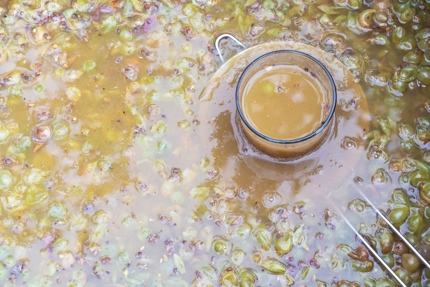
Journeying through time and geography
The origins of orange wine trace back millennia to the ancient lands of Georgia, nestled at the eastern shores of the Black Sea. As the cradle of wine, Georgia’s viticultural heritage dates back over 8,000 years. The technique of fermenting local grape varieties like Rkatsiteli and Mtsvane Kakhuri in qvevri, colossal terracotta pots, captures a storied tradition. These pots, lined with beeswax paper and often buried, orchestrate the transformation of grapes into liquid gold. The lunar rhythm, guiding every step from planting to bottling, underscores the reverence for winemaking.
In more recent times, winemakers in Italy’s north-eastern region of Friuli-Venezia Giulia, along with the region of Goriška Brda in Slovenia just across the border, have begun making orange wine, mostly using Friulano, Ribolla Gialla or Pinot Grigio grapes, and sometimes sweeter Muscat grapes. Among these winemakers, Josko Gravner, from Collio Goriziano in Friuli-Venezia Giulia, is credited with bringing orange wine to popularity in the last two decades. It all started with him visiting Georgia in the year 2000 and learning about the age-old techniques. He returned to Italy, imported a few qvevri from Georgia and began making wine the ancient way. His first few batches of orange wine, brilliantly hued and highly structured, impressed critics and inspired other winemakers. And so, a new wave of orange wines was born.
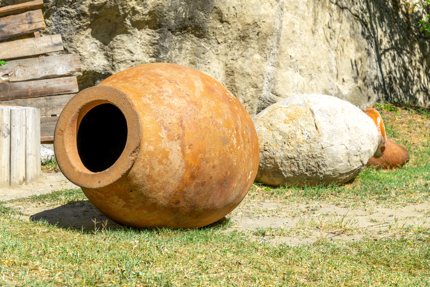
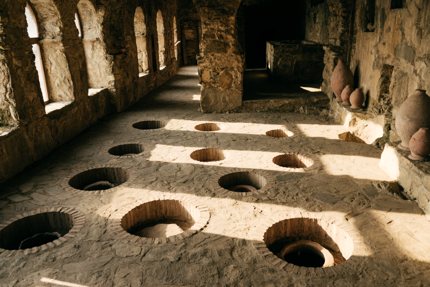
It’s worth mentioning that the label of ‘orange wine’ is believed to have only emerged in 2004. Working in a Sicilian cellar, British wine importer David Harvey simply described what he saw – and the term caught on as a convenient, catch-all term.
Now the allure of orange wine has spread beyond its birthplaces to global winemaking landscapes. From Austria to Australia, producers embraced the trend, amplifying the spectrum of orange wines. In Australia, using the Sauvignon Blanc grape for orange winemaking adds a distinctive note to the ever-evolving symphony of flavours.
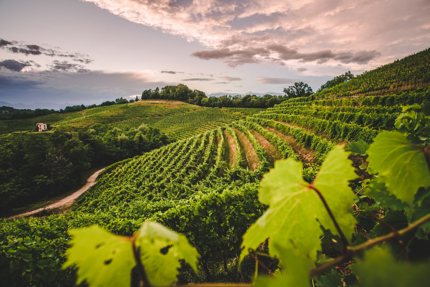
The symphony of tastes: unravelling orange wine’s palate
The tasting journey through orange wine is as diverse as the colours of a cosmic tapestry. Yet, amidst the kaleidoscope of notes, a few constants emerge. A slightly nutty bouquet is regularly described, while on the palate, one should expect intense, savoury and faintly fruity notes, plus a tannin level akin to a lighter red wine and even a slight sourness.
Remember, the duration of skin contact imprints itself on the wine’s character, acting as a signpost for the senses. Less contact yields a lighter, mellower demeanour, while prolonged maceration births eccentric, astringent profiles best suited for enthusiasts.
Orange wine’s expanding popularity has made it a fixture in wine bars. For those embarking on an orange odyssey, visiting a wine bar guided by an expert can be enlightening.
Embracing culinary diversity: orange wine and food pairing
The allure of orange wine lies in its ability to harmonise with a spectrum of flavours, bridging the gap between red and white wines. With the body of a red wine minus the weight, it dances seamlessly with red meats, fatty fish, mature cheeses, and deep-fried delights. It’s also an enchanting partner to dishes like Indian Jalfrezi curry, Spanish paella, Moroccan lamb tagine, and crisp Chinese pork belly. However, if your orange wine is young and vivacious, consider pairing it with lighter fare.
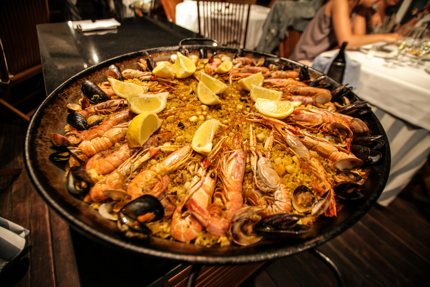
Savouring the experience: serving orange wine
The art of serving orange wine is a delicate dance. Slightly chilled or at cellar temperature, around 12-14°C (53-57°F), enhances the experience. Decanting for 15-30 minutes before indulgence, inviting oxygen to work its magic, caresses the wine’s tannins, rendering them supple and inviting.
Orange wine and the natural wine conundrum
Amidst the vinicultural labyrinth, the classification of orange wine as “natural” is a thorny topic, entangled in varying definitions. It’s vital to dispel the assumption that all orange wines emerge from Biodynamic vineyards. Terms like “additive-free” or “minimal intervention” better captures the essence, as most orange winemakers steer clear of added sulphites and laboratory yeasts, embracing the symbiosis of naturally-occurring yeasts on grape skins. Some also do not control the temperatures during fermentation or even filter the wine.
As the sun sets on our exploration, the tapestry of orange wine reveals itself as a canvas for creativity. Beyond convention, each producer weaves a unique narrative, crafting their interpretation of this enigmatic elixir.
Cheers.
This article was updated on 12 August 2023.
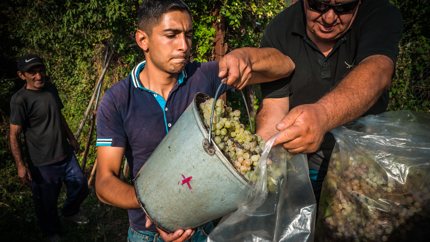
You may also like:







